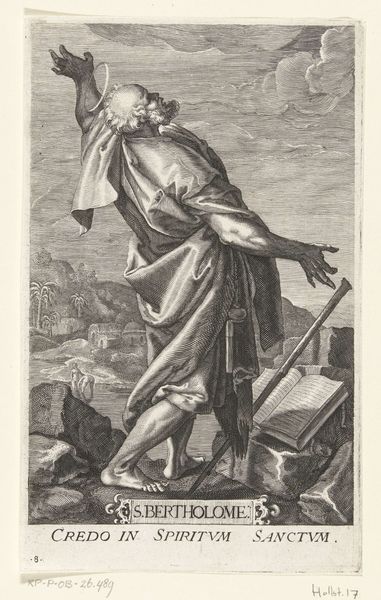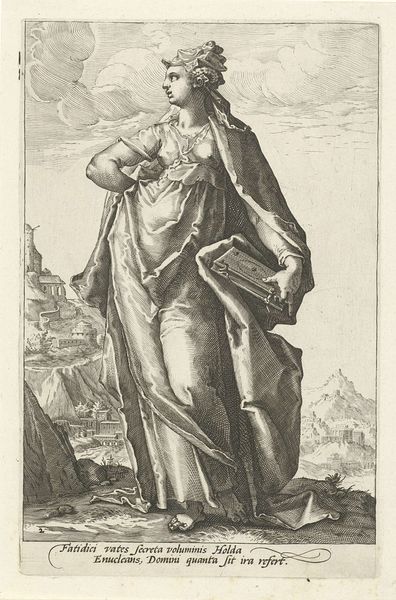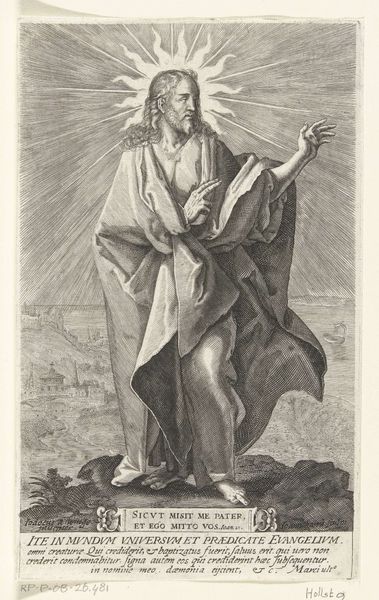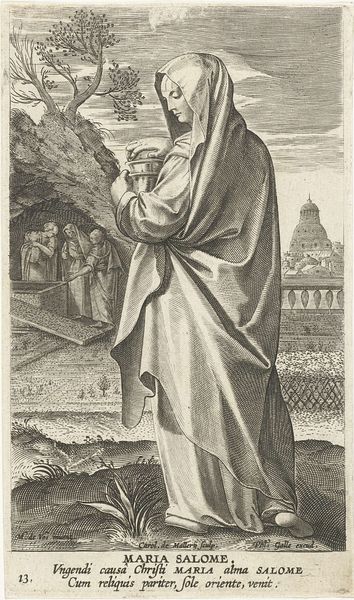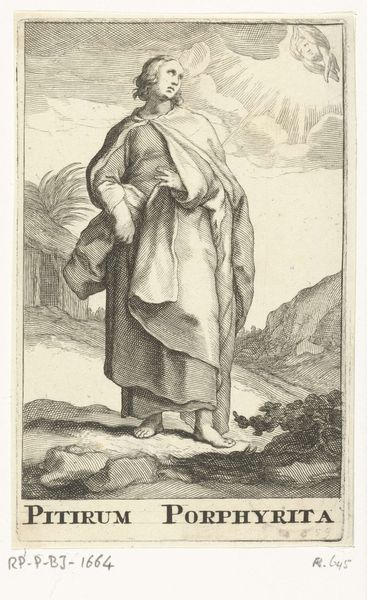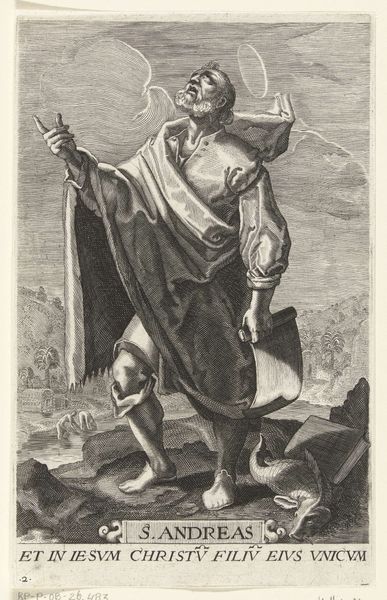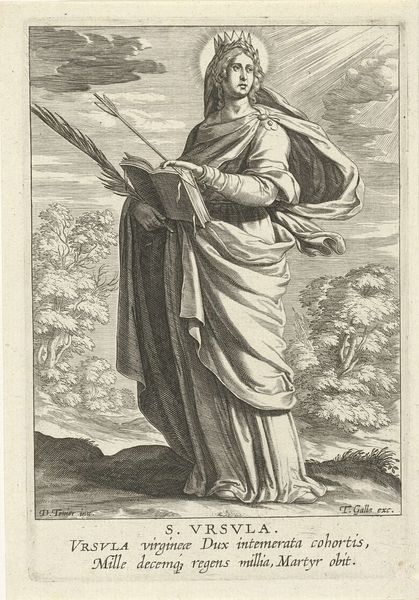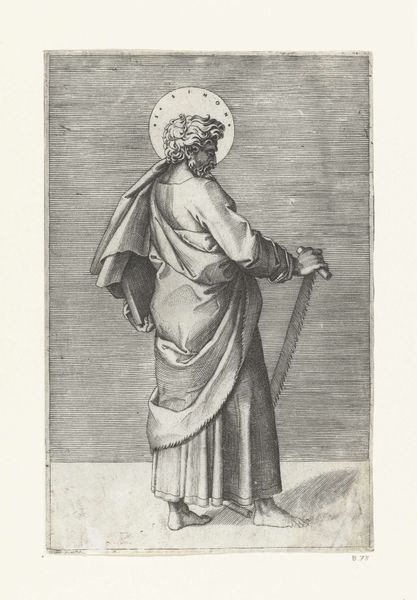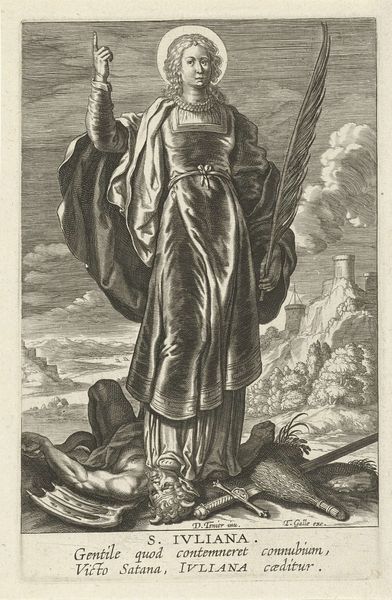
print, engraving
#
portrait
#
medieval
# print
#
11_renaissance
#
history-painting
#
engraving
Dimensions: height 199 mm, width 126 mm
Copyright: Rijks Museum: Open Domain
Curator: Here at the Rijksmuseum, we have an engraving, likely produced between 1591 and 1629, portraying Apostel Jakobus de Mindere, or James the Lesser. Editor: My immediate impression is the verticality—the apostle stretches upward, almost yearning. It gives a powerful sense of longing. Curator: Let's contextualize. This piece likely reflects the heightened religious sensitivities of the period. James the Lesser, a significant figure, is depicted with the traditional halo. Notice how the sword subtly rests behind him—a detail referring to the manner of his martyrdom. The print is interesting in its composition. Editor: The technique is compelling too. The delicate lines create impressive tonal variety for a monochromatic engraving, lending considerable depth to the robes. What strikes me also is the gaze lifted to the heavens: it evokes a profound inner spirituality that almost disconnects from earthly elements. Curator: The historical setting influences such displays. Post-Reformation, religious iconography became highly charged. These images of saints were often intended to reaffirm Catholic authority and inspire devotion. Think about how gender operates here too – holy male figures often served to reinstate established patriarchal power structures in both sacred and worldly spheres. Editor: I can certainly see that. It's a reminder that depictions of divinity and piety aren’t unbiased. The city in the background also stands out: it is rendered with minute accuracy, thus adding historical layers of significance. Curator: Indeed. Images circulated widely then, reinforcing certain social and political messages within increasingly literate societies. Art like this can be understood as a powerful form of religious communication and a mechanism to reinforce traditional values. Editor: On my part, understanding the role played by structure, line, and form in reinforcing symbolic representation leads to another vantage point for studying historical material. Curator: Thank you for taking the time. I hope our conversation has helped illuminate the multiple dimensions embedded within this beautiful engraving. Editor: Yes, it’s about viewing through varying theoretical and observational lenses, making us rethink artworks that have been standing static for so long.
Comments
No comments
Be the first to comment and join the conversation on the ultimate creative platform.
